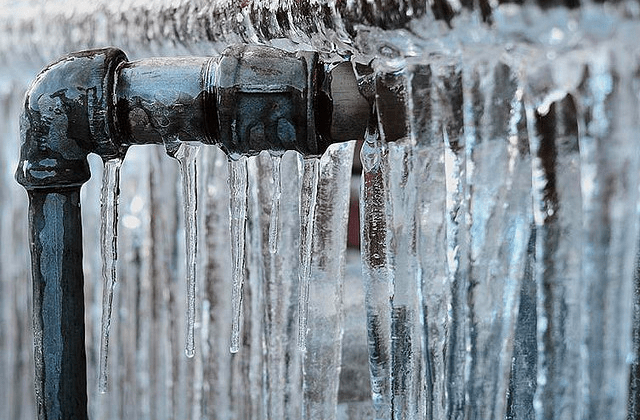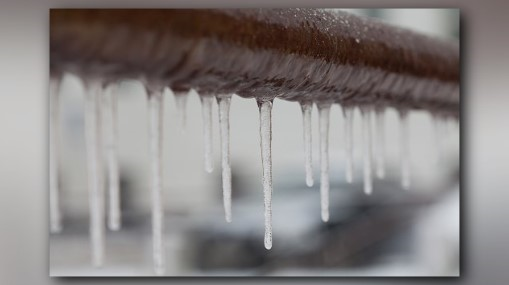Essential Tips to Protect Against Frozen Plumbing in Cold Weather
Essential Tips to Protect Against Frozen Plumbing in Cold Weather
Blog Article
This post down below relating to How to prepare your home plumbing for winter weather is exceedingly informative. Read it yourself and see what you think about it.

Winter can wreak havoc on your plumbing, especially by freezing pipes. Here's how to avoid it from occurring and what to do if it does.
Intro
As temperature levels decline, the danger of frozen pipes rises, potentially resulting in expensive repair work and water damages. Understanding exactly how to prevent icy pipes is essential for homeowners in cool climates.
Avoidance Tips
Insulating prone pipelines
Wrap pipes in insulation sleeves or make use of heat tape to secure them from freezing temperature levels. Focus on pipes in unheated or outside areas of the home.
Heating strategies
Maintain indoor rooms effectively warmed, especially locations with plumbing. Open cabinet doors to enable warm air to flow around pipelines under sinks.
Exactly how to determine frozen pipelines
Look for lowered water flow from taps, unusual smells or sounds from pipes, and noticeable frost on exposed pipelines.
Long-Term Solutions
Structural adjustments
Think about rerouting pipelines away from exterior wall surfaces or unheated locations. Add extra insulation to attic rooms, cellars, and crawl spaces.
Upgrading insulation
Purchase high-grade insulation for pipes, attic rooms, and wall surfaces. Proper insulation assists maintain regular temperatures and minimizes the danger of icy pipelines.
Protecting Outdoor Pipes
Garden hose pipes and outside faucets
Separate and drain yard pipes prior to winter season. Install frost-proof spigots or cover exterior taps with protected caps.
Comprehending Icy Pipelines
What creates pipelines to ice up?
Pipelines ice up when revealed to temperatures below 32 ° F (0 ° C) for extended durations. As water inside the pipes ices up, it broadens, taxing the pipe wall surfaces and potentially creating them to rupture.
Risks and problems
Icy pipes can bring about water system disruptions, home damages, and pricey repair work. Ruptured pipelines can flood homes and trigger considerable architectural damage.
Indicators of Frozen Pipeline
Identifying frozen pipes early can prevent them from rupturing.
What to Do If Your Pipes Freeze
Immediate activities to take
If you presume frozen pipelines, maintain taps available to relieve stress as the ice thaws. Use a hairdryer or towels soaked in warm water to thaw pipelines slowly.
Final thought
Avoiding icy pipes requires aggressive steps and fast reactions. By understanding the reasons, signs, and preventive measures, homeowners can secure their pipes during cold weather.
5 Ways to Prevent Frozen Pipes
Drain Outdoor Faucets and Disconnect Hoses
First, close the shut-off valve that controls the flow of water in the pipe to your outdoor faucet. Then, head outside to disconnect and drain your hose and open the outdoor faucet to allow the water to completely drain out of the line. Turn off the faucet when done. Finally, head back to the shut-off valve and drain the remaining water inside the pipe into a bucket or container. Additionally, if you have a home irrigation system, you should consider hiring an expert to clear the system of water each year.
Insulate Pipes
One of the best and most cost-effective methods for preventing frozen water pipes is to wrap your pipes with insulation. This is especially important for areas in your home that aren’t exposed to heat, such as an attic. We suggest using foam sleeves, which can typically be found at your local hardware store.
Keep Heat Running at 65
Your pipes are located inside your walls, and the temperature there is much colder than the rest of the house. To prevent your pipes from freezing, The Insurance Information Institute suggests that you keep your home heated to at least 65 degrees, even when traveling. You may want to invest in smart devices that can keep an eye on the temperature in your home while you’re away.
Leave Water Dripping
Moving water — even a small trickle — can prevent ice from forming inside your pipes. When freezing temps are imminent, start a drip of water from all faucets that serve exposed pipes. Leaving a few faucets running will also help relieve pressure inside the pipes and help prevent a rupture if the water inside freezes.
Open Cupboard Doors
Warm your kitchen and bathroom pipes by opening cupboards and vanities. You should also leave your interior doors ajar to help warm air circulate evenly throughout your home.

Do you like reading up on How to prepare your home plumbing for winter weather? Put a remark further down. We would be delighted to listen to your opinions about this review. Hoping that you visit us again later on. Sharing is caring. Helping people is fun. Many thanks for your time. Return soon.
Go Company Report this page